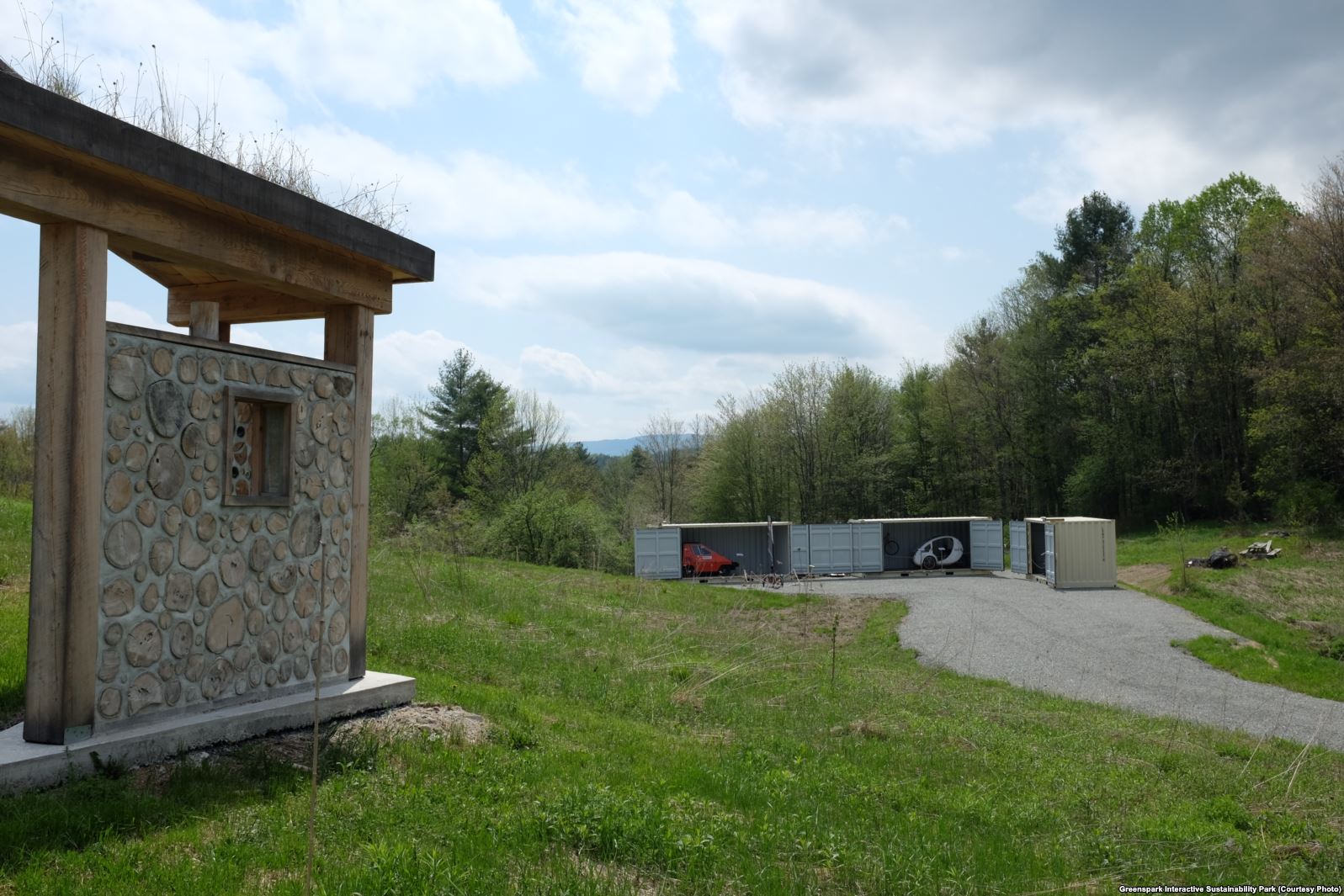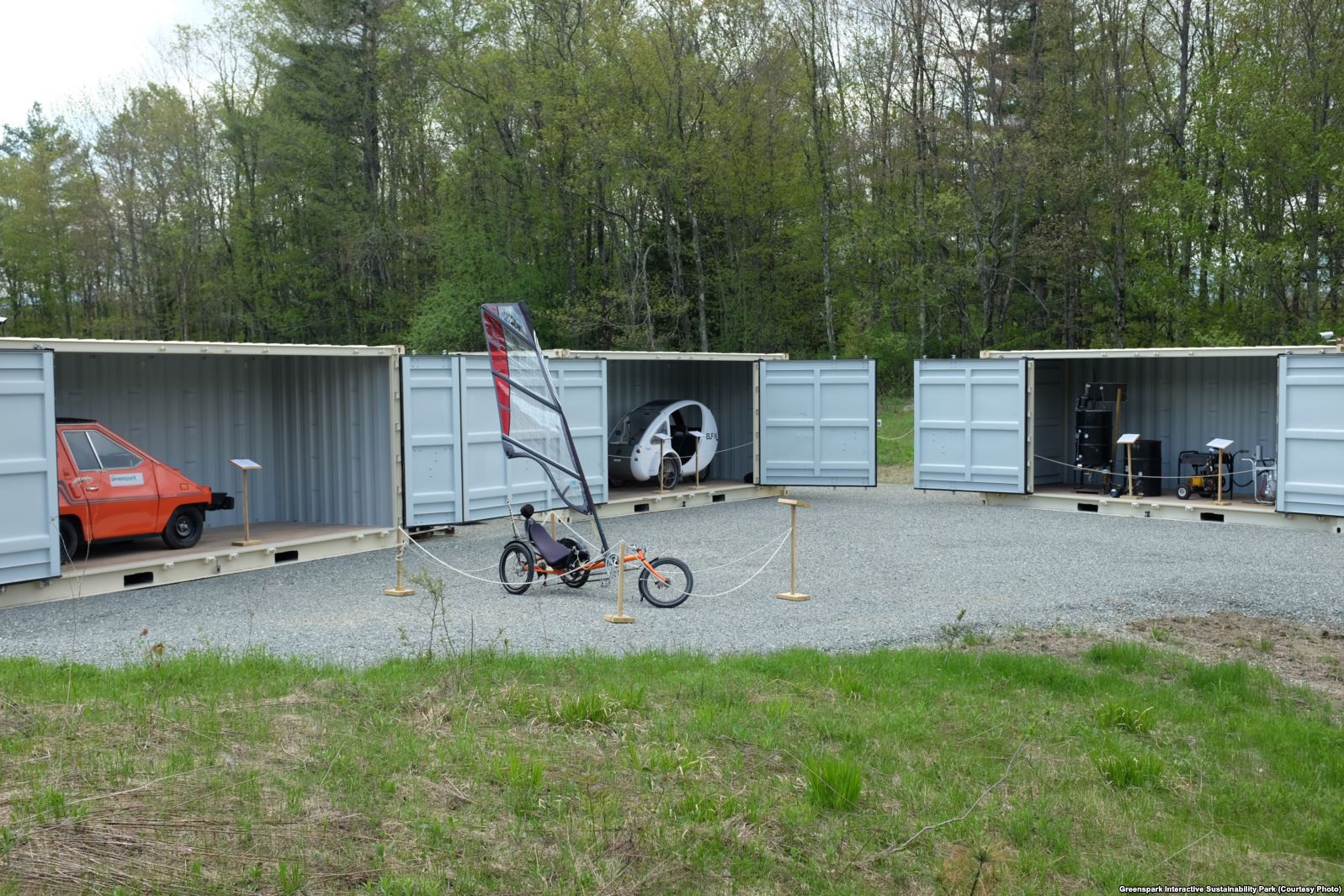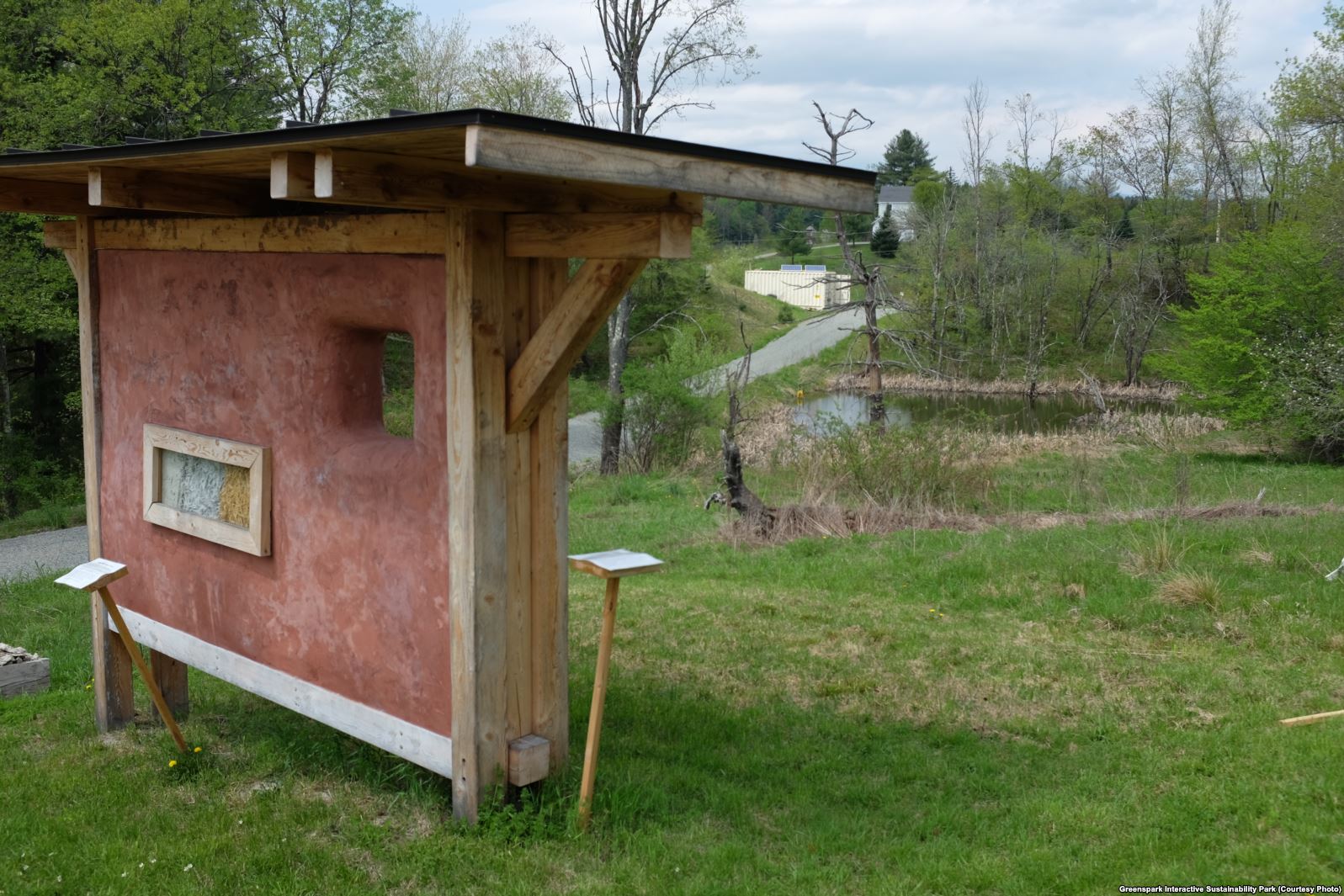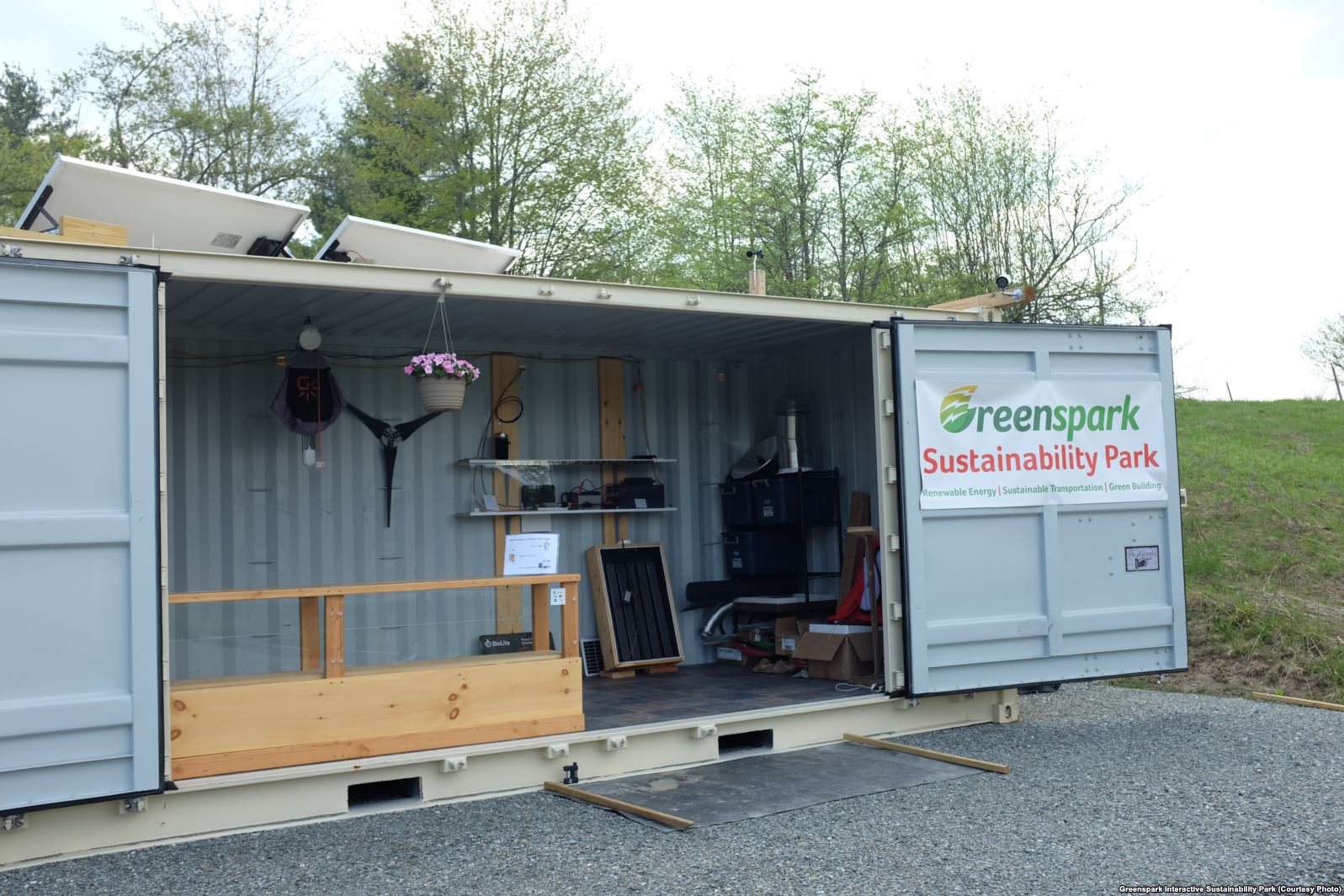Success story: Ukrainians created the first US sustainable development park
After spending a year traveling around the United States and getting acquainted with various sustainable development technologies across the country, a Ukrainian couple from New York decided to create the country's first park, where they would present achievements in the field of renewable energy, green building and environmental transport. Writes Alina Golinata for VOA.

Photo: personal archive
Several years of research and search - and in 2017, an interactive park for sustainable development Greenspark (Greenspark Interactive Sustainability Park), located along the popular tourist route 100 in Vermont, opened its doors to the first visitors.
Alexander Chernomazov and Ella Malamud are originally from Kharkov, but they met and began life together in the USA. They lived in Brooklyn, New York, building careers - Alex in the field of information technology, Ella - biology teachers at school. At some point, both began to be interested in green technologies, natural buildings and electric cars. And then we realized that there were books and videos on YouTube not enough, and decided to see everything with my own eyes. Alexander and Ella quit their jobs and began to discover the country and its people.
Voice of America talked with Alex Chernomazov about how his wife and I had the idea of a park and what was needed to realize it.
Alina Golinata: How did you decide to drop everything and go on a trip?
Alexander Chernomazov: first, because we understood: if we do not do this now, we will never do it. It sounds worse than it actually is, since the costs were minimal. We paid for food and gas, we lived in a car.
I bought an SUV and modified it - added a bed, refrigerator, solar panel, sun canopy, reclining chairs. We spent a lot of time in deserts, vacant lots, and forests—in an SUV we could drive along a forest road into a clearing and spend a week there.
During this trip, we spent a third, if not more, of our time in national parks - two weeks in one, three weeks in another. After driving around the country for a year, we realized that we had not seen anything at all.

Photo: personal archive
A. G.: How did the idea of the park come about?
A. Ch.: After seeing everything that people are doing in terms of green technologies and sustainable development - and it started as a personal quest, we realized that we had learned so many interesting things that it would be good to make a place where people could come and see it all in half an hour, rather than spend a year traveling. Although if someone wants to spend a year, I won’t dissuade you!
A. G.: Did you purposefully search for people who work with green technologies?
A. Ch.: We had a very wide range. We were interested in many different topics - electric cars, solar energy, hydrothermal, wind energy.
Also at that moment we were interested in ideological communities - this is what was called communes in the 60-70s. There are many hundreds of them in the States, ranging from small to large. These are villages in which people do not live by chance, but came there with intention and goals. There are millions of them according to various criteria - religious, technical, environmental... We needed to understand whether this was for us. We realized that we were interested in this so as to come for a visit, and not to settle. It’s too difficult with personal relationships: people come, as a rule, with good intentions, and then everyday problems arise.

Photo: personal archive
A. G.: How did you start to implement the idea of the park?
A. Ch.: Upon returning from a trip to 2011, we decided that we didn’t want to stay in New York, but would move to Vermont. For several years they were looking for land. In the meantime, I found a job in the specialty. I bought a lot in 2016, and at that very moment I was cut down. I decided not to look for a new job and focus on this project. I thought: if I don’t do it now, I will never do it again.

Photo: personal archive
A. G.: How did you support yourself financially?
A. Ch.: We bought an apartment building and began to rent apartments. The house pays for itself and gives a little profit, which is enough for food and gas. This is enough to do business.
A. G.: Did you plan this in advance?
A. Ch.: Yes, that was part of the plan. When we went on a trip, one of our ideas was to build a house with our own hands, without a mortgage. But we met a man in Death Valley who gave us the idea of buying an apartment building and renting it out - then there is a mortgage, but it doesn’t hang like a sword of Damocles over our heads. Money is tight, but I have free time.

Photo: personal archive
A. G.: When did you open the park?
A. Ch.: We started taking the first visitors in October of 2017 of the year, in order to experience all the processes, to see if everything works properly. The official grand opening is scheduled for June 2 2018.
After an unsuccessful fundraising campaign on Kickstarter in the spring of 2017, we changed our ambitions - we decided not to build, but to order cargo containers that open not from the back, but from the side, across the entire length. They became a storage solution for the winter, as well as part of the exhibits. We did not modify those intended for the transport exhibition in any way, but the fourth, the guest center, was comfortably furnished.
Since then we have been building and building. There are a lot of ideas on where to grow and add exhibits. Some of them require funds, some are simple and I do it myself. To get complex exhibits, especially the “green building” sections, we organized master classes for which participants paid whatever they could, hired an instructor, and all the income went to him. This way, people had an interesting experience, the instructor received a reward, and we were left with an exhibit for the park.
A. G.: What an interesting decision!
A. Ch.: And I didn’t come up with this - this is what we saw while traveling around the States. We just saw so many places - for example, a center that focuses on one method of natural construction. They do monthly workshops with a million different buildings made using this method, but that's all they focus on. Or a place that only deals with electric bikes. And such that you can come and see the spectrum of everything that is happening and what is possible on a certain topic - we did not find this in the States and decided to do it.

Photo: personal archive
A. G.: What age are you targeting?
A. Ch.: The goal is to make it interesting for adults, as well as for schoolchildren. We need the park to start working, and then there will be more freedom with money so that we can add exhibits and so on. Now we are doing a minimum program, and these are mainly exhibits for adults.
A.G.: Only you and your wife work - do you have no assistants?
A. Ch.: We have volunteers who sometimes come to help. But basically, it’s us, or rather me myself, who work 12 hours a day. The wife spends time with the children. In the evenings we discuss everything, sometimes I call her in the middle of the day when I can’t decide something on my own.

Photo: personal archive
A. G.: Do you regret all these changes that have occurred in your life?
A. Ch.: Stable good salary, I remember it was good. (Smiles.)
A. G.: What is the most difficult thing in building a business?
A. Ch.: Strategies. That is, it is precisely to understand the priorities - what to take on in what order, what is not worth taking on yet, what is generally a waste of time and is not even worth thinking about.
A. G.: What helps you make decisions, choose, stay motivated?
A. Ch.: There are no problems with motivation. It is difficult to choose and make decisions, especially in problems where the result is not known in advance. For example, when we were preparing for a campaign on Kickstarter, There were many different ways of advertising. I've tried this and that, but you never know, it will work - maybe you just didn't reach the right person or took the wrong approach.

Photo: personal archive
A. G.: What are your plans for the near future?
A. Ch.: The first priority is the grand opening. Lots of plans, let's see what comes of it. With this project, I learned to do a lot of things myself - process photographs, shoot and edit videos, work with electronic circuits, advertise on social media... I have to learn everything. You won't be bored. The list of things to do is more than there are hours in the day.
Read also on ForumDaily:
Our emigration: life and business in Brazil
Why is Washington healthier than the rest of America?
Our US: Ukrainian about the first year of life in the country
Our emigration: life in the Dominican Republic
Subscribe to ForumDaily on Google NewsDo you want more important and interesting news about life in the USA and immigration to America? — support us donate! Also subscribe to our page Facebook. Select the “Priority in display” option and read us first. Also, don't forget to subscribe to our РєР ° РЅР ° Р »РІ Telegram and Instagram- there is a lot of interesting things there. And join thousands of readers ForumDaily New York — there you will find a lot of interesting and positive information about life in the metropolis.











